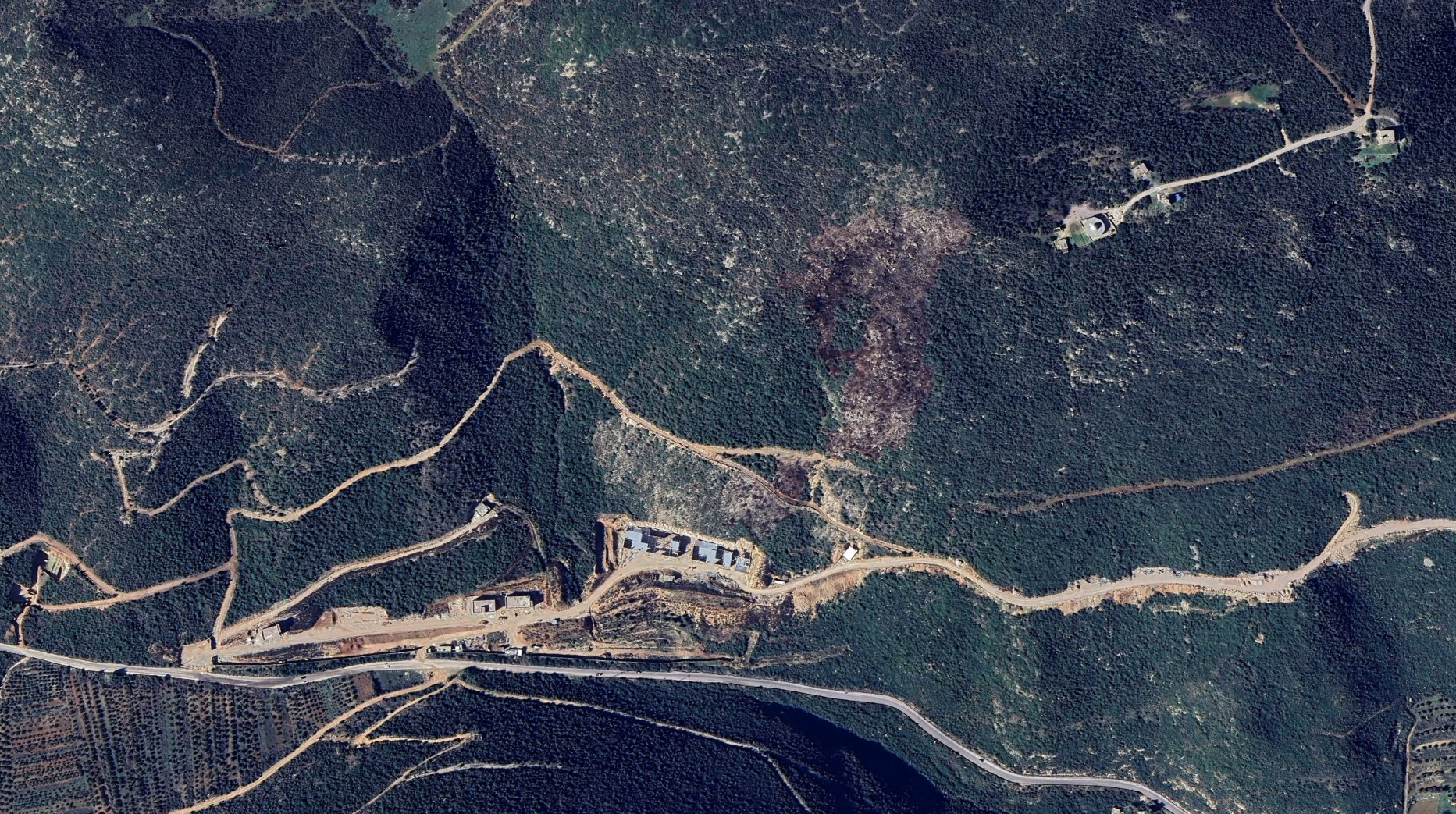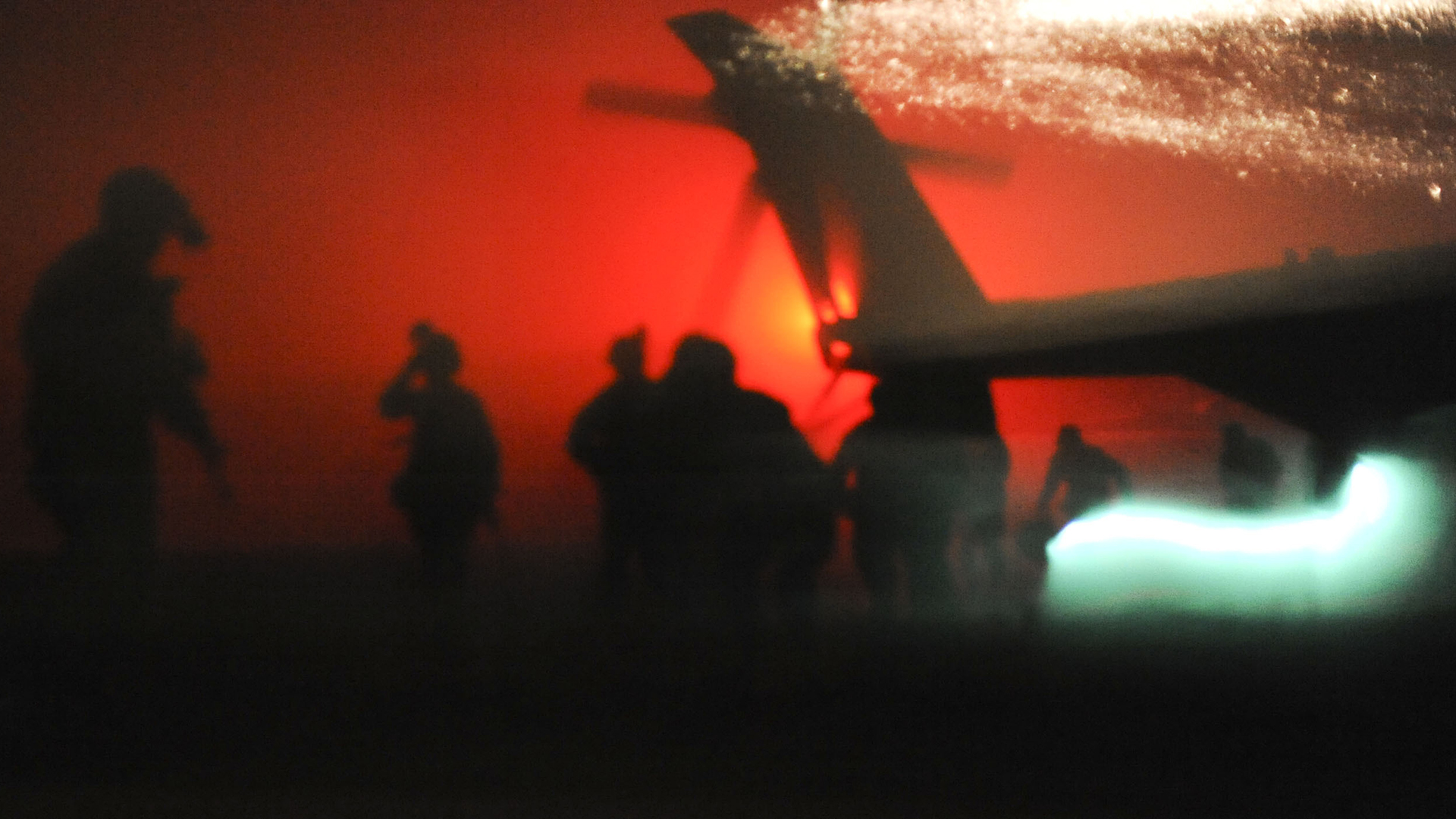Israel destroyed a secretive missile production facility in northwest Syria last week in an attack that included inserting special operations forces by helicopter to retrieve equipment and documents, media outlets are reporting. The new details shed light on an attack initially described as only an airstrike. Not only did the raid strike at the heart of the Iranian military presence in Syria, but it also sent a clear message to Tehran that the Israel Defense Forces (IDF) can and will attack deep underground complexes with ground troops that it otherwise cannot destroy from the air.
The raid, which took place September 9, “obliterated” the facility, located in northwestern Syria near the Lebanese border, The New York Times reported, citing unnamed American and other Western officials. “A number of people” were killed at the site, those sources said. It is located about 140 miles north of Israel.
Ground forces were used in the attack “because of its complexity and to recover information from the secret weapons site, the officials said,” according to the Times. They added that there were no Israeli casualties.
The raid also included airstrikes on the sprawling site in Masyaf, which is tied to the Syrian Scientific Studies and Researchers Center (SSRC). Despite its name, the SSRC is actually a network of facilities across the country.
According to the Times, independent experts, Israeli officials, and the U.S. government have described the SSRC’s site in Masyaf “as a center of weapons research and development, aided by the country’s ally Iran. Chemical, biological and potentially nuclear weapons are developed there, as are missiles used by Hezbollah, the powerful Iran-backed militia group in Lebanon that is fighting Israel.”
The operation was carried out by the Israeli Air Force’s elite Shaldag special operations unit, according to Axios.
“The Israeli special unit surprised the Syrian guards at the facility and killed several of them during the raid, but no Iranians or Hezbollah militants were hurt,” Axios reported, citing anonymous sources. “The special forces used explosives they brought with them in order to blow up the underground facility, including sophisticated machinery, from inside, two sources said.”

Since 2017, Israeli airstrikes have targeted facilities at Masyaf multiple times. Between 2018 and 2022, an S-300 surface-to-air missile system Russia ostensibly gifted to the Syrian government helped guard the site.
“The Iranians began building the underground facility [at Masyaf] in coordination with Hezbollah and Syria in 2018 after a series of Israeli airstrikes destroyed most of the Iranian missile production infrastructure in Syria,” according to Axios’ report today.
The decision “to build an underground factory deep inside a mountain in Masyaf [was] because it would be impenetrable to Israeli air strikes,” Axios wrote. “The sources claimed the Iranian plan was to produce the precision missiles in this protected facility near the border with Lebanon so that the delivery process to Hezbollah in Lebanon could take place quickly and with less risk of Israeli airstrikes.”

The new subterranean facility was discovered by Israeli intelligence and monitored for the past five years under the code name “Deep Layer,” according to Axios. “The Israelis realized they would not be able to destroy the facility with an airstrike and would need a ground operation,” one of the sources told the publication.
The Israeli military “considered conducting the operation at least twice in recent years but it wasn’t approved because of the high risk, one source said,” Axios added.
The fact that Israel executed such a risky operation shows its willingness to put troops on the ground in order to neutralize a major Iranian facility it cannot otherwise destroy using conventional weapons from the air. Israel lacks the ability to be able to destroy deeply buried fortified installations, including critical facilities related to Iran’s nuclear program, such as the enrichment site at Fordow. The U.S. military potentially has a capability to strike these sites from the air, but even that is not certain. Barring the use of nuclear weapons, Israel’s bunker busters, while capable, cannot reach deep enough to take these sites out. As we have discussed multiple times, the IDF would have to insert special operations forces with unique training on long-range, extremely risky raids in order to physically access these facilities and destroy them. Unconventional means, including nuclear contamination, may be feasible but doing so would highly controversial and problematic in its own right.

While Iran is markedly farther from this site in Syria, Israel has had years to plan for executing such long-range missions and has shown its ability to operate even in significant numbers inside the heart of Iran for deep espionage purposes. Still, executing such an operation against a major installation in Iran would be far more challenging. But while the risks would be much higher, the stakes would be even more disproportionate. would be the stakes.
With all this in mind, it’s very likely that we just saw a glimpse of how the IDF could employ its elite special operations forces if it were to try to eliminate Iran’s nuclear program, or at least drastically degrade it. While destroying this site and garnering critical intelligence were the key goals of the operation, sending a stark message to Iran about its ability to access even the most hardened facilities deep in a hostile area was clearly also a factor in the operation.
Before the revelations about the ground component of Israel’s operation, reports about what happened in Masyaf earlier this week had presented it as yet another airstrike on the site. The Syrian Observatory for Human Rights (SOHR) a U.K.-based organization tracking conflict in Syria, had said the strikes hit “an area containing a scientific research institute where work on developing short- and medium-range precision missiles is conducted,” the Times reported.
You can read more about Hezbollah’s massive arsenal of stand-off weapons in our deep dive here.
As we noted in 2019, the facility had also been responsible for Syria’s chemical and ballistic missile programs, as well as other advanced military research. It has come under attack before.
Area residents unwittingly videoed the helicopters used in the strike.
Israel notified senior U.S. officials before conducting the strikes, the Times said.
“On Sunday, the head of U.S. Central Command, Gen. Michael E. Kurilla, visited the underground war room of the Israel Defense Forces’ Northern Command, where he was presented with the military’s operational plans for Lebanon, according to the Israel Defense Forces,” the publication wrote.
Local Syrian media at the time also initially reported what had happened as being purely airstrikes. A Syrian opposition TV channel provided eyewitness accounts Wednesday.
It began around 11 p.m. local time, Middle East researcher Eva J. Koulouriotis stated on Twitter Wednesday afternoon.
“…residents of western and central Syria heard the sounds of a large number of huge explosions in the direction of the Masyaf area near the Syrian-Lebanese border,” she wrote. “These explosions were not the only thing that happened in Masyaf this evening.”
The operation “lasted for about an hour, during which the Israeli special forces were able to enter the facility, withdraw important equipment and documents, mine the facility from the inside, then destroy it and withdraw under air cover through fire belts surrounding the site, to prevent any air movements by Assad’s warplanes,” Koulouriotis claimed.
The attack killed 18 citizens and injured 37 others, the official Syrian SANA news agency claimed on Sunday. It also caused “material damage to the infrastructure, electricity networks, water, telephone, sewage lines, roads and machinery.”
The raid came as Hezbollah and Israel continue to exchange fire along the border with Lebanon. Last month, Israel launched a preemptive attack against Hezbollah targets in Lebanon That was in anticipation of an expected strike from the jihadi group for the July 30 assassination of Hezbollah military commander Fuad Shukr in Beirut
It was also launched against the backdrop of a still looming Iranian retaliation attack in response to the July 31 assassination in Tehran of Ismail Haniyeh, the top political leader of Hamas.
While Iran had threatened to hit Israel, that has yet to happen. This week, the aircraft carrier USS Theodore Roosevelt and its strike group left the Middle East region, departing for the INDPACOM area. That left the region with the normal presence of just one carrier strike group – the USS Abraham Lincoln Carrier Strike Group.
The Pentagon’s top spokesman sidestepped a question of whether moving the Roosevelt strike group is an indication that the U.S. believes the threat from Iran has died down as time has passed.
“Iran has indicated that they want to retaliate against Israel, and so we’re going to continue to take that threat very seriously, and we’re going to continue to maintain a robust presence in the central command and European Command, AORs, and so that’s not going to change,” Air Force Maj. Gen. Pat Ryder told reporters, including from The War Zone, Thursday afternoon.
Whether this attack changes Iran’s calculous or spurs Hezbollah to ramp up its attacks is unknown at the moment. While this attack was likely a setback for Hezbollah and Iran, just how badly it hurt is also unclear.
The coming days might provide an answer to retaliation strikes, but it might be some time before we learn the scope of the damage this caused.
Contact the author: howard@thewarzone.com
